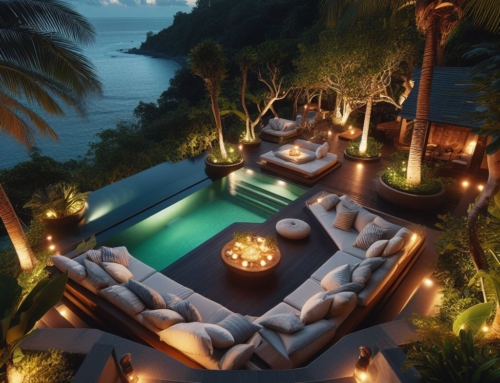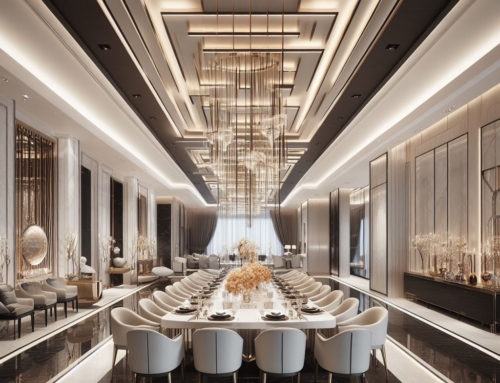10 Essential Tips for Stunning Interior Design
Interior design is the art of creating beautiful and functional spaces within a building. It involves the use of color, texture, furniture, and other elements to create a cohesive and visually appealing environment. Whether you are designing your own home or looking to pursue a career in interior design, these 10 essential tips will help you create stunning spaces that will leave a lasting impression.
Tip 1: Understand the Basics of Design
Before diving into the world of interior design, it is important to have a basic understanding of design principles. These include balance, proportion, scale, rhythm, and harmony. Understanding these principles will help you create a well-designed space that is visually appealing and functional.
Balance
Balance refers to the distribution of visual weight in a room. It can be achieved through symmetrical or asymmetrical arrangements. Symmetrical balance is achieved by placing identical objects on either side of a central point, while asymmetrical balance involves using different objects of similar visual weight to create balance.
Proportion and Scale
Proportion and scale refer to the size and relationship of objects within a space. It is important to consider the size of the room and the furniture when designing a space. Oversized furniture in a small room can make the space feel cramped, while small furniture in a large room can make it feel empty.
Rhythm
Rhythm refers to the repetition of elements in a space. It can be achieved through the use of patterns, colors, or textures. Rhythm helps create a sense of movement and flow in a room.
Harmony
Harmony refers to the overall feeling of a space. It is achieved by using complementary colors, textures, and patterns to create a cohesive and visually pleasing environment.
Tip 2: Choose a Style

by Steven Ungermann (https://unsplash.com/@steveungermann)
There are many different interior design styles to choose from, such as modern, traditional, minimalist, and industrial. It is important to choose a style that reflects your personal taste and complements the architecture of the space. One popular style that has gained popularity in recent years is brutalist interior design, which is characterized by its use of raw, industrial materials and bold, geometric shapes.
Tip 3: Consider the Function of the Space
When designing a space, it is important to consider its function. A living room, for example, should be comfortable and inviting, while a home office should be functional and organized. Understanding the purpose of a space will help guide your design choices.
Tip 4: Use Color Wisely
Color is a powerful tool in interior design. It can evoke emotions, create a sense of space, and tie a room together. When choosing colors for a space, consider the mood you want to create. Warm colors like red and orange can create a cozy and inviting atmosphere, while cool colors like blue and green can create a calming and serene environment.
Tip 5: Incorporate Texture
Texture adds depth and interest to a space. It can be achieved through the use of different materials such as wood, metal, and fabric. Mixing textures can create a visually appealing and dynamic space.
Tip 6: Don’t Be Afraid to Mix Styles
Mixing different styles can add character and personality to a space. For example, pairing modern furniture with vintage accents can create a unique and eclectic look. Just be sure to maintain a cohesive color palette and consider the scale and proportion of the different elements.
Tip 7: Pay Attention to Lighting
Lighting is an important aspect of interior design. It can set the mood of a space and highlight certain features. Natural light is always preferred, but when that is not possible, it is important to have a mix of ambient, task, and accent lighting to create a well-lit and functional space.
Tip 8: Consider the Flow of the Space

by Francesca Tosolini (https://unsplash.com/@fromitaly)
The flow of a space refers to how people move through it. It is important to consider the flow when designing a space to ensure that it is functional and easy to navigate. For example, in an open concept living room, the furniture should be arranged in a way that allows for easy movement between the different areas.
Tip 9: Add Personal Touches
Adding personal touches to a space can make it feel more inviting and unique. This can be achieved through the use of family photos, artwork, or sentimental objects. These personal touches can also serve as conversation starters and add character to a space.
Tip 10: Don’t Be Afraid to Seek Professional Help
If you are feeling overwhelmed or unsure about your design choices, don’t be afraid to seek professional help. Interior designers have the knowledge and expertise to create stunning spaces that meet your needs and reflect your personal style. They can also help you source materials and furniture, and manage the project from start to finish.
Conclusion
Interior design is a creative and rewarding field that allows you to transform spaces into beautiful and functional environments. By understanding the basics of design, choosing a style, and considering the function of the space, you can create stunning interiors that will leave a lasting impression. Don’t be afraid to mix styles, incorporate texture, and add personal touches to make the space truly your own. And if you need help, don’t hesitate to seek the assistance of a professional interior designer. With these tips in mind, you can create stunning interior designs that will stand the test of time.






